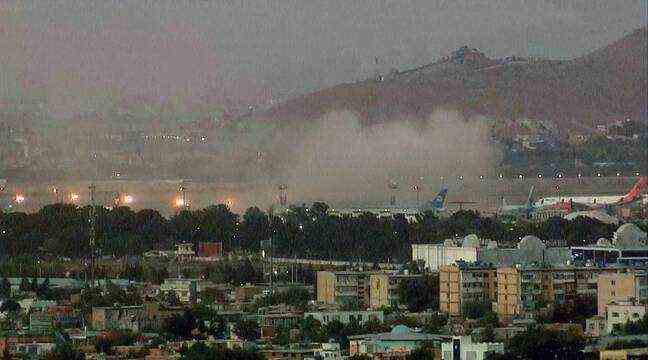“We will chase you and we will make you pay,” promised Joe Biden. The double attack which killed at least 73 people, including 13 American soldiers, on Thursday, was claimed by the jihadist group Islamic State Khorasan Province. Daesh’s branch in Afghanistan was seen as a growing threat to civilians evacuated from Kabul airport before the end of the US withdrawal, which is due to end on August 31. The group, which formed in 2014 and hates the Taliban, has been responsible for numerous bloody attacks in the region in recent years.
EIPK, ISIS-K, ISKP… Several acronyms for the same group
Shortly after Daesh (the Arabic acronym for the Islamic State group, or ISIS) proclaimed a “caliphate” in Iraq and Syria in 2014, former members of the Tehreek-e-Taliban Pakistan (TTP, the Taliban Pakistani) proclaimed their allegiance to the group’s leader, Abu Bakr al-Baghdadi. They were then joined by Afghans disillusioned with the Taliban and having defected. In early 2015, Daesh officially recognized the creation of its province (wilaya) of Khorasan, the former name given to a region that encompassed parts of present-day Afghanistan, Pakistan, Iran and Central Asia. Its local branch is known by several names, including Islamic State Khorasan Province (EIPK) in French, or ISKP in the English-speaking world (Islamic State Khorasan Province). Joe Bien uses the more familiar American acronym ISIS-K (Islamic State of Iraq and Syria Khorasan).
Why is the group opposed to the Taliban?
Even though they are two radical Sunni groups, they differ in terms of theology and strategy. They are also in competition to embody jihad. As a sign of the strong enmity between them, Daesh described the Taliban as apostates, in particular for having negotiated with the Americans. The group also criticizes the Taliban for relying on a strict nationalist ethnic base instead of espousing an Islamic approach without borders, dthe Stanford Center for International Security.
How many fighters does the group have?
EIPK established its beachhead in 2015 in the mountainous district Achin, on the border with Pakistan. Elsewhere, the group has clashed with the Taliban, although it has managed to form sleeper cells elsewhere in Afghanistan, especially in the capital, and in Pakistan, according to the United Nations. The EIPK was repressed by the Taliban and proved unable to expand its territory, unlike what had been done in Iraq and Syria. In 2019, the Afghan government army, after joint operations with the United States, announced that it had been defeated in Nangarhar province. The latest estimates of its strength range from a minimum of 500 to a few thousand combatants, according to a UN Security Council report in July.
What type of attacks have been carried out?
The EIKP has claimed responsibility for some of the deadliest attacks in recent years in Afghanistan and Pakistan. He slaughtered civilians in mosques, hospitals and other public places. The group has mostly targeted Muslims they consider heretics, especially Shiites. In August 2019, he claimed responsibility for an attack against Shiites at a wedding in Kabul, in which 91 people were killed. He was also strongly suspected of having been behind an attack in May 2020 on a maternity hospital in a predominantly Shiite district of the capital that claimed the lives of 25 people, including 16 mothers and newborn babies. For three days, the British and American intelligence services had warned of an “imminent” risk against civilians evacuated at Kabul airport.

